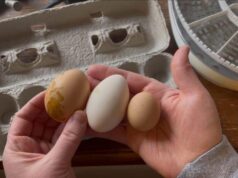Raising healthy chicks starts with a well-organized chick brooder food setup. As a chicken lover, you understand the importance of providing your young flock with the right environment and nutrition. A chick brooder not only keeps them warm but also ensures they are safe and have access to adequate food and water.

Why a Proper Chick Brooder Food Setup Matters
Creating a proper chick brooder food setup is crucial for the growth and development of your chicks. A well-maintained setup ensures that chicks receive the nutrients they need, helping them grow into strong and healthy adult chickens. Additionally, it minimizes waste and prevents health issues that can arise from poor feeding practices.
Essential Components of a Chick Brooder
1. Brooder Box
The brooder box is the heart of your setup. It should be spacious enough to allow chicks to move freely. Consider the number of chicks and their growth when selecting the size. For guidance on dimensions, check out this chick brooder dimensions guide.
2. Heat Source
A reliable heat source is essential for maintaining the right temperature. Chicks need warmth to thrive, especially in their early weeks. Heat lamps or brooder plates are popular choices.
3. Bedding Material
Using the right bedding material can make a big difference. Consider materials like paper towels or wood shavings. For more eco-friendly options, explore this eco-friendly chick brooder article.
Feeding Your Chicks
1. Starter Feed
Chicks require a balanced starter feed, rich in protein and essential nutrients. Look for feeds specifically designed for chicks, as these will meet their nutritional needs.
2. Clean Water
Access to clean, fresh water is vital. Ensure waterers are cleaned regularly to prevent disease. Consider using a waterer that minimizes spillage to keep the brooder clean and dry.
3. Supplements
While starter feed provides most of what chicks need, adding probiotics or vitamins can boost their health. However, moderation is key to avoid over-supplementation.
Maintaining a Clean Brooder Environment
1. Regular Cleaning
Keeping the brooder clean is essential for preventing disease. Regularly change the bedding and clean food and water containers. For tips on maintaining cleanliness, visit this brooder bedding guide.
2. Monitoring Temperature
Ensure the brooder maintains a steady temperature. Use a thermometer to monitor it and adjust the heat source as needed.
3. Observing Chicks
Observe your chicks daily for signs of health issues. Being proactive can help you address problems before they escalate.
Transitioning Chicks to a Coop
As chicks grow, they will eventually need to transition to a coop. Gradually introduce them to the outdoor environment to reduce stress and ensure a smooth transition.

Frequently Asked Questions
What is the ideal temperature for a chick brooder?
The ideal temperature for a chick brooder starts at about 95F and decreases by 5F each week until chicks are ready to move to a coop.
How often should I feed my chicks?
Chicks should have constant access to food and water. Ensure their feeders are always filled to promote healthy growth.
When can chicks move from the brooder to the coop?
Chicks can move to the coop when they are fully feathered, usually around 6-8 weeks, and when outdoor temperatures are suitable.
For a more in-depth guide on raising chicks, you might find this PetMD chick care sheet helpful. By following these guidelines, you can ensure that your chicks grow up healthy and strong, providing you with a thriving flock. Happy chicken keeping!
This article contains affiliate links. We may earn a commission at no extra cost to you.











